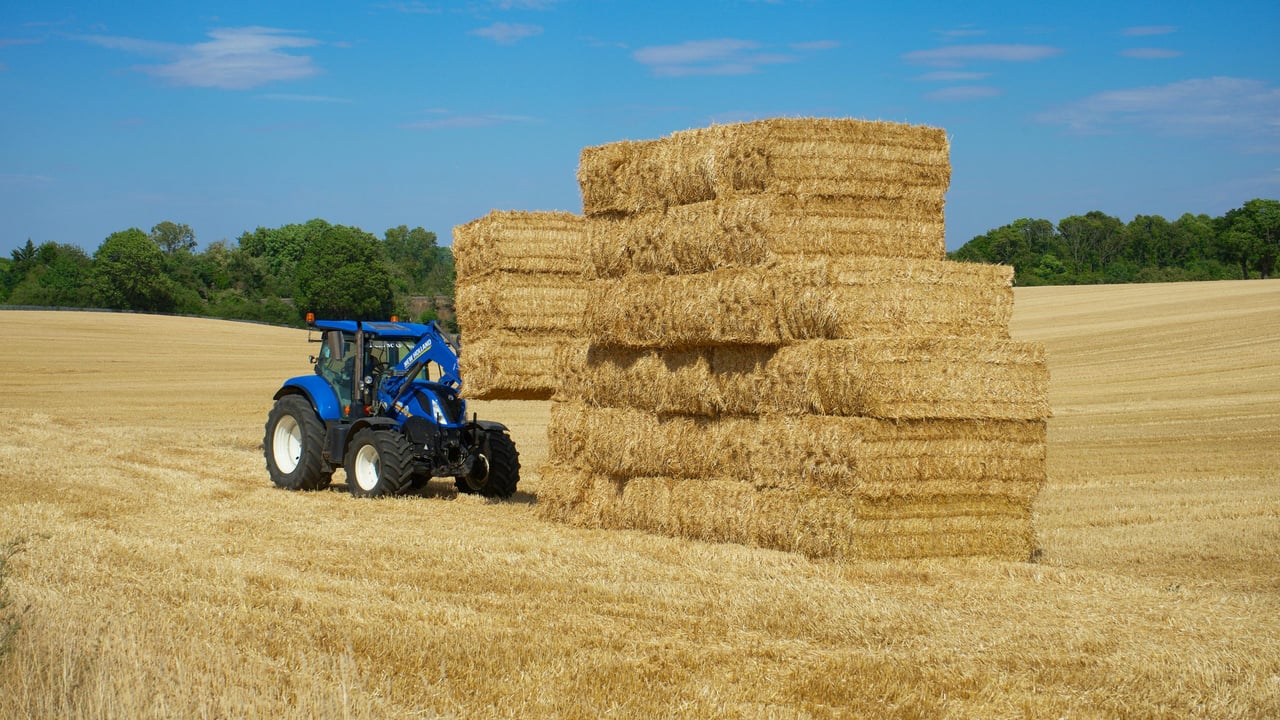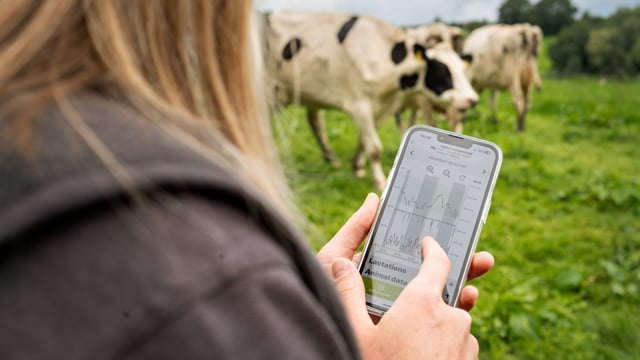Are farmers equipped with enough straw for the winter season?
2025 proved to be a good year for straw production in Ireland, but have droughts in the UK as well as the Straw Incorporation Measure (SIM) still affected availability?
After two consecutively poor years in terms of weather and straw production, a lot of livestock farmers came into 2025 feeling aggrieved with the SIM, pinning the low availability in previous years on the scheme.
Then as we watched the UK suffer an extremely poor year for tillage, farmers' concerns grew even further thinking they may have to fight with high bidders from across the water for what little straw has being on the market over the last two years.
But thankfully that was not the case, following a good year, most farmers have bales already in the shed ahead of housing and spring calving.
Straw availability
Speaking to Agriland, Teagasc crops specialist Ciaran Collins discussed the current straw situation, stating that "there is a good supply of high-quality Irish straw available this season".
"Overall straw quality is excellent, with very little rain during the harvest contributing to ideal conditions."
According to Teagasc, over 3,000 applicants applied for a total area of 66,482ha in the SIM during the 2025 season.
However, Collins said: "The Straw Incorporation Measure (SIM) has not had a significant impact on the market for livestock farmers, as it primarily involves oats, oilseed rape, and some wheaten straw."
Teagasc said that the SIM is typically used to chop lower value oaten straw, which is not as popular within the livestock market.
The scheme also has not had an effect on the price of bales, with Teagasc stating that the prices for 4x4 bales actually fell by about €5/bale in some areas, reaching €20-25/bale.
While the common 8x4x3 bales of wheaten straw often seen on a lot of dairy farms across the country are currently available for between €45-50.
Teagasc said that high yields from areas of winter crops most likely led to the reduction in prices for the 2025 season.
Despite this drop in price, Teagasc highlighted how farmers are importing straw from Spain at a premium price, with farmers wanting good quality bales for the use of total mixed ration.
However Teagasc stated: "There seems to be little appetite to pay similar prices for native straw even where quality is similar."
Winter season
While straw is available, farmers must be asking themselves how much do they actually need for the winter season.
Realistically, calves use the most straw on a dairy farm, they need a good thick bed of it which should be changed regularly to prevent disease spread and pneumonia.
Pens should ideally comprise of no more than 10-12 calves; each one of these pens should receive approximately half a large square bale, or one full round bale per week.
Dairy farmers cannot expect their calves to eat from that bedding. Instead calves should be given approximately 15kg of good quality, clean, dust-free straw in racks to help develop their rumen.
However, farmers must remember not to over feed it as it will reduce concentrate intake, and therefore affect live weight gain.
Cows and heifers will not require too much straw, unless you are buffer feeding them with it if fodder is tight.
Straw is also used if the cow is in a fibre deficiency, as it has high fibrous values of 80% neutral detergent fiber (NDF) in comparison to the typical winter diet of silage which only has 45-50% NDF.
However, it also has a low UFL value of 0.44/kg, so when you are feeding straw, it should be fed at a rate of 5kg per cow/day, or one big 8x4x4 bale per day for the average 100-cow herd.
Cows typically use the most during their visit to the labour ward, as they should be provided with clean, dry bedding during this time.
By chopping straw for bedding you can reduce the amount you require by up to 10%.
At the end of the day, it is better to over budget on how much straw you need, with some farmers even buying a two-year supply while it is available.




